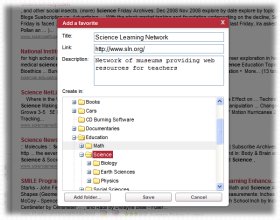|
Education
Web
Viewing 1-2 of 2 total results
included within regular classroom assessment but which are not assessed at the State level. Skills to Support Standards - common across grade levels. Oregon Standards Newspaper — 2009–2010 School Year — Oregon Department of Education Page 29B High School High School Reading...
1
0
included within regular classroom assessment but which are not assessed at the State level. Skills to Support Standards - common across grade levels. Oregon Standards Newspaper — 2009–2010 School Year — Oregon Department of Education Page 29B High School High School Reading analyze words, recognize words, and learn to read grade-level text fluently across the subject areas . DeCoDing AnD worD reCognition EL.HS.RE.01 Read at an independent and instructional reading level appropriate to grade level
1
0
http://www.ode.state.or.us/teachlearn/real/documents/elcm.pdf#page=1
www.ode.state.or.us/teachlearn/real/documents/elcm.pdf#page=1
included within regular classroom assessment but which are not assessed at the State level. Skills to Support Standards - common across grade levels. Oregon Standards Newspaper — 2009–2010 School Year — Oregon Department <span class="highlight">of</span> Education Page 29B High School High School Reading analyze words, recognize words, and learn to read grade-level text fluently across the subject areas . DeCoDing AnD worD <span class="highlight">reCognition</span> EL.HS.RE.01 Read at an <span class="highlight">independent</span> and instructional reading level appropriate to grade level
Middle School §110.B. (5) Listening/speaking/audiences. The student speaks clearly and appropriately to different audiences for different purposes and occasions. The student is expected to: (A) adapt spoken language such as word choice, diction, and usage to the audience, purpose, and o...
1
0
Middle School §110.B. (5) Listening/speaking/audiences. The student speaks clearly and appropriately to different audiences for different purposes and occasions. The student is expected to: (A) adapt spoken language such as word choice, diction, and usage to the audience, purpose, and occasion (4-8); (B) demonstrate effective communications skills that reflect such demands as interviewing, reporting, requesting, and providing information (4-8); (C) present dramatic interpretations of experiences
22
0
http://ritter.tea.state.tx.us/rules/tac/chapter110/ch110b.pdf#page=22
ritter.tea.state.tx.us/rules/tac/chapter110/ch110b.pdf#page=22
§110.B. Middle School (E) use effective rate, volume, pitch, and tone <span class="highlight">for</span> the audience and setting (4-8); and (F) clarify and support spoken ideas with evidence, elaborations, and examples (4-8). (6) Reading/word identification. The student uses a variety <span class="highlight">of</span> word <span class="highlight">recognition</span> strategies. The student is expected to: (A) apply knowledge <span class="highlight">of</span> letter-sound correspondences, language structure, and context to recognize words (4-8); (B) use structural <span class="highlight">analysis</span> to identify root words with prefixes such as
29
0
http://ritter.tea.state.tx.us/rules/tac/chapter110/ch110b.pdf#page=29
ritter.tea.state.tx.us/rules/tac/chapter110/ch110b.pdf#page=29
Middle School §110.B. (5) Listening/speaking/audiences. The student speaks clearly and appropriately to different audiences <span class="highlight">for</span> different purposes and occasions. The student is expected to: (A) adapt spoken language such as word choice, diction, and usage to the audience, purpose, and occasion (4-8); (B) demonstrate effective communications skills that reflect such demands as interviewing, reporting, requesting, and providing <span class="highlight">information</span> (4-8); (C) present dramatic interpretations <span class="highlight">of</span> experiences
42
0
http://ritter.tea.state.tx.us/rules/tac/chapter110/ch110b.pdf#page=42
ritter.tea.state.tx.us/rules/tac/chapter110/ch110b.pdf#page=42
middle school students continue to read on their own or listen to texts read aloud <span class="highlight">for</span> the purpose <span class="highlight">of</span> enjoyment. Middle school students read both printed texts and electronic media independently, bringing with them various strategies to aid in comprehension. Significant blocks <span class="highlight">of</span> time are provided <span class="highlight">for</span> reading both <span class="highlight">independent</span> and instructional-level material <span class="highlight">for</span> varied purposes such as collecting <span class="highlight">information</span>, learning about and appreciating the writer's craft, and discovering models <span class="highlight">for</span> their own writing
|
